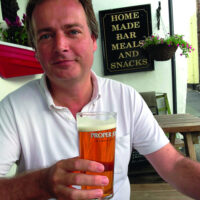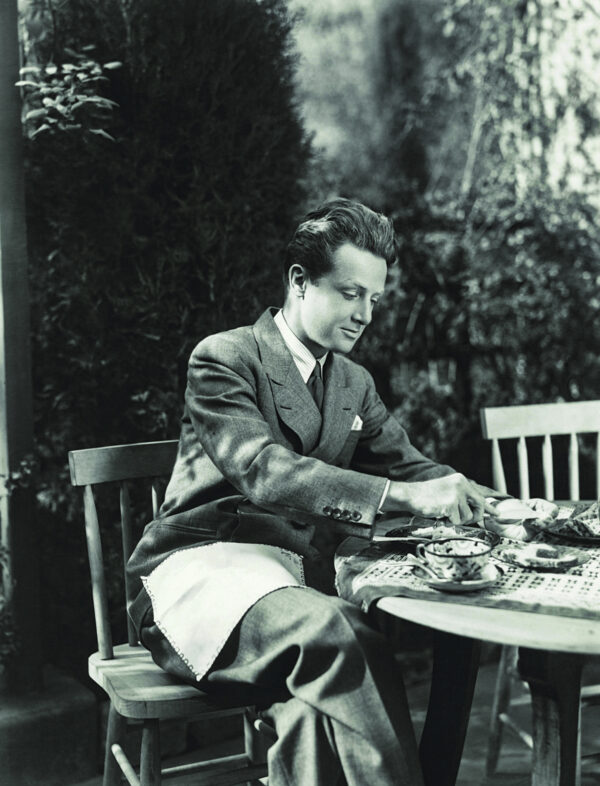Putting the 'Full' back into English
Bill Knott celebrates the great British breakfast in all its glory

By Bill Knott
October 17 2024
"To eat well in England,” declared William Somerset Maugham, “you should have breakfast three times a day.” I doubt, however, that the grand old man of letters ever toyed with a bowl of muesli, sipped an apple, ginger and acai berry smoothie, or wolfed down a smashed avocado on sourdough toast. The country house breakfast was more up his street: according to Harold Nicolson, his contemporary and another man of letters, Edwardian sideboards would groan with “hams, tongues, galantines, cold grouse, ditto pheasant, ditto partridge, ditto ptarmigan. No Edwardian meal was complete without ptarmigan... Then would come whiting, and omelette and devilled kidneys and little fishy messes in shells. And then tongue and ham and a slice of ptarmigan. And then scones and marmalade. And then a little melon, and a nectarine, and just one or two of those delicious raspberries.” The menfolk, suitably replete, would then stride around the estate and tell minions what to do all day, working up an appetite for lunch and occasionally destroying some wildlife en route, which — after a suitable time left hanging by their feet in the game larder until pleasingly putrid — could form the basis of a future, light, morning repast. Meanwhile, the working classes were feasting on the full English: sausages, bacon, eggs, black pudding, fried bread, mounds of toast and gallons of tea so strong you could stand a spoon in it. Breakfasts elsewhere in the United Kingdom tended to be even more lavish: depending on your location, there might be Lorne sausage, hogs pudding, soda farls, wheaten bread, white pudding, laverbread and tattie scones.
So what happened? The Edwardians and their breakfasts have gone the way of all flesh while, as a species, the greasy spoon is more critically endangered than the red squirrel or the bluefin tuna. One theory holds that central heating is to blame, and there is some substance to it: despite many layers of tweed, Edwardian toffs were invariably as frozen to the marrow as their draughty mansions, so a proper breakfast was de rigueur. And manual labourers, similarly numbed by cold for many months of the year, had the added, calorie-burning disadvantage of actually working for a living. But, personally, I blame the middle classes. Once the aristocrats had given their ruinously expensive stately piles to the National Trust and moved into the stable block, and machines had replaced honest toil, and everyone started working in offices, we stopped needing — or deserving — a real breakfast.
“Breakfasts... might include Lorne sausage, hogs pudding, soda farls, wheaten bread, white pudding, laverbread, and tattie scones”
Add to that the various health scares about salt, saturated fats, dairy products, and more or less anything else you care to name, and it is hardly surprising that the full English breakfast has gone out of fashion. Overweening parents, from the 1970s onwards, have worried about little Lucy and darling Dominic getting their five-a-day and keeping their precious little arteries unclogged, forcing granola and yoghurt down their unwilling throats while packing their lunchboxes with oatcakes, houmous, and celery sticks. And yet, I think, there is hope. While the heroic Edwardian breakfast is, I fear, lost forever, except perhaps to elderly American tourists on Downton Abbey-themed country-house weekends, the fry-up may just be showing signs of a renaissance. One reason for this is the new-found excellence of British produce. The demise of the greasy spoon is because most of them served crap. Waterlogged, white-flecked, livid-pink bacon; sausages of dubious provenance and manufacture (what the EU wanted Opposite: The traditional English breakfast derived from shooting parties, to fortify spirits and soften the blow of damp, unheated houses to rebrand as “emulsified, high-fat offal tubes”, according to Jim Hacker in Yes, Minister); pallid eggs on anaemic toast, glistening with margarine... If, like me, you have occasionally stumbled into a caff, horrendously hungover, hoping to restore the tissues and stiffen the sinews, and left feeling even more nauseous, you will know what I mean. Not even brown sauce can disguise the taste of mediocrity.

But now, even some very smart restaurants are opening for breakfast, partly because, I suspect, restaurants need to keep their doors open for as many hours as possible to defray their exorbitant overheads. In St James’s, even the resolutely French Maison François opens at 7am, with a fine Full English sharing the same menu as croissants, pains au chocolat, and caviar-topped eggs royale. Nearby, at Fallow, its fry-up (served from 7.30am) includes smoked bacon, herby sausages, and bubble & squeak. At £24, it is admittedly pricier than a greasy spoon, but the step up in quality is enormous, and it’s a lot less than it charges for lunch or dinner, so long as you lay off the Dom Pérignon. Just up the road, at Hawksmoor on Air Street, breakfast features bespoke sausages, sugar pit-cured bacon and Armagh apple-enriched black pudding from Irish master butcher Peter Hannan. They are not alone: from Edinburgh to Cardiff, Penzance to Belfast, restaurants, hotels, and even humble B&Bs are championing their local produce, revelling in the heritage of a meal we thought we had lost. Just don’t try ordering the ptarmigan.
